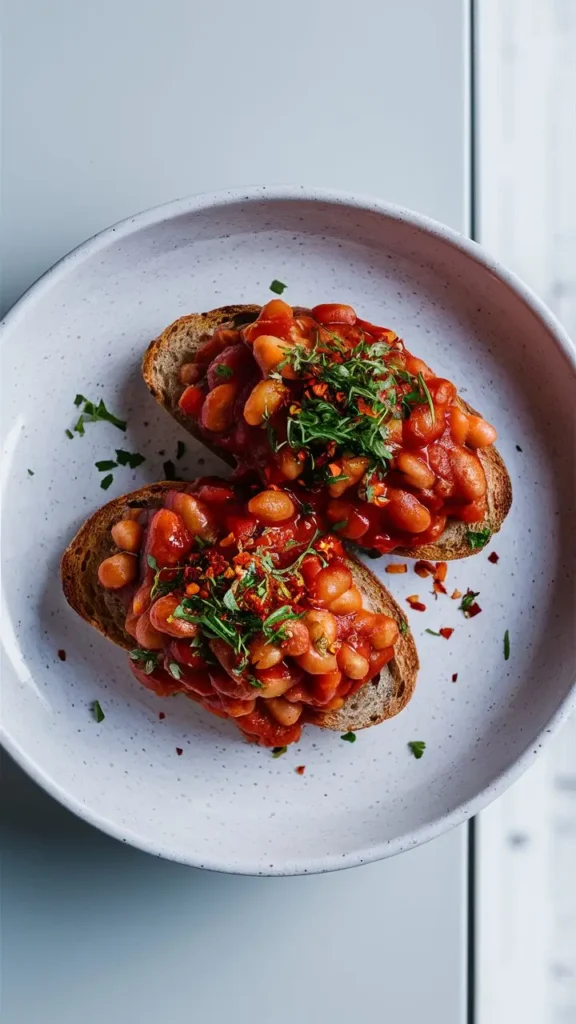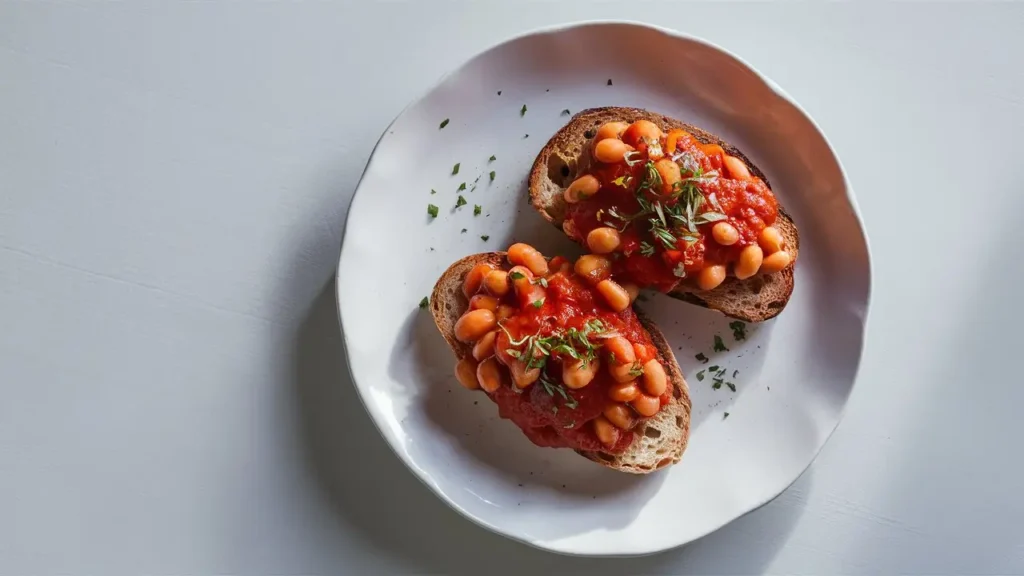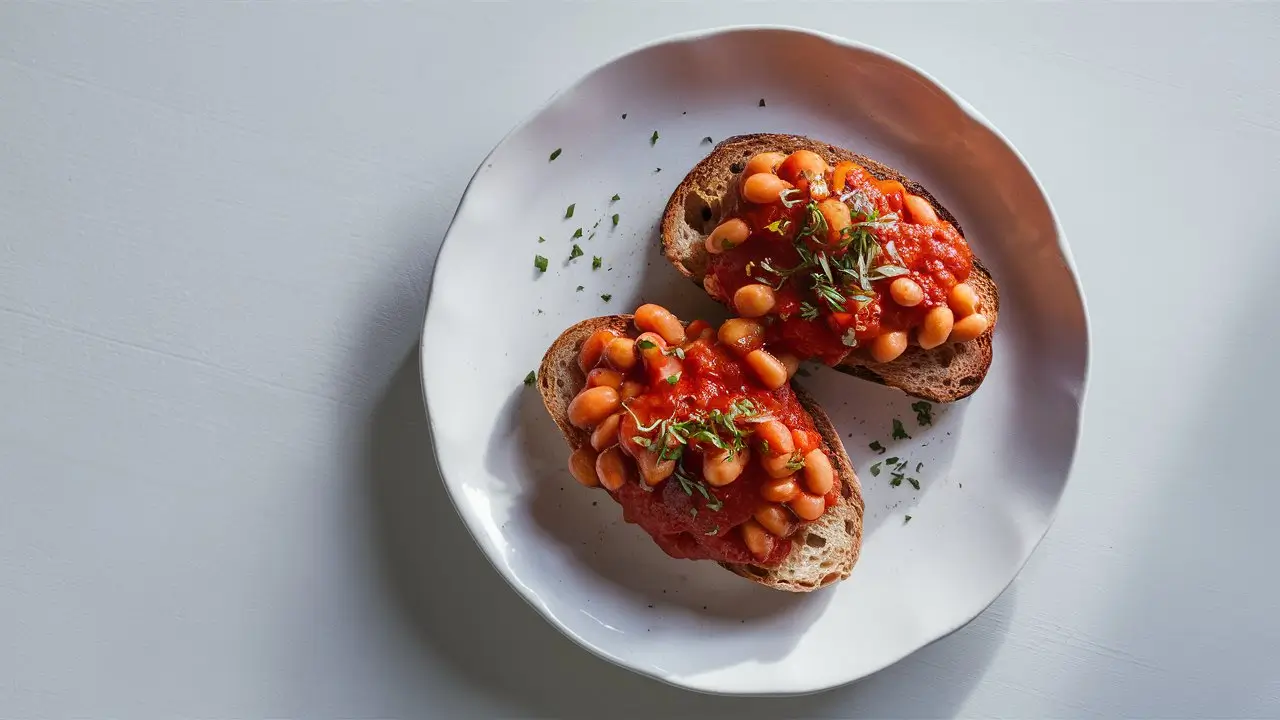Beans on Toast might sound simple, but it’s a beloved dish across the United Kingdom and beyond. It combines pantry staples—baked beans and toasted bread—into something warm, hearty, and deeply satisfying. Whether you’re making a quick breakfast, a cozy lunch, or a budget-friendly dinner, this humble dish delivers every time.
In this guide, you’ll learn how to make the perfect beans on toast, explore flavor variations, and understand why this classic meal has stood the test of time.
Why You Will Love This Recipe
-
Quick and Easy – Ready in under 15 minutes with minimal prep.
-
Budget-Friendly – Uses inexpensive pantry staples.
-
Customizable – Add cheese, eggs, herbs, or sauces to make it your own.
-
Filling and Satisfying – High in protein and fiber to keep you full.
What Is Beans on Toast?
At its core, Beans on Toast is a dish made by spooning warm baked beans over toasted bread. Traditionally made with Heinz baked beans in tomato sauce and white or wholemeal bread, it’s a staple in many British households.
This dish is loved for its simplicity, affordability, and the comforting balance of textures—crisp toast paired with soft, savory beans.
Ingredients List
You only need a few key ingredients to make the classic version:
Basic Ingredients:
-
1 can (400g) baked beans (e.g., Heinz, Bush’s, or any brand)
-
2 slices of bread (white, wholemeal, sourdough, or gluten-free)
-
1 tablespoon butter (optional, for spreading)
Optional Additions:
-
Grated cheddar or mozzarella
-
Salt and black pepper
-
Dash of Worcestershire sauce or hot sauce
-
Fresh parsley, thyme, or chives for garnish
Timing & Servings
-
Prep Time: 5 minutes
-
Cook Time: 10 minutes
-
Total Time: 15 minutes
-
Servings: 2
Step-by-Step Instructions for Beans on Toast
Step 1: Toast the Bread
Toast 2 slices of your favorite bread until golden and crisp. You can use a toaster or oven broiler.
Step 2: Warm the Beans
Pour the canned baked beans into a small saucepan. Heat over medium heat, stirring occasionally, until bubbling and heated through—about 5–7 minutes.
Optional: Add a dash of Worcestershire sauce or a pinch of pepper to elevate the flavor.
Step 3: Assemble
Spread butter on the toasted bread (optional for richness). Spoon the hot beans over the toast. Serve immediately.

Choosing the Right Bread
The bread you use will impact the overall texture and taste. Consider these options:
-
White sandwich bread – classic and soft, absorbs the beans well.
-
Wholemeal or multigrain – heartier, adds fiber and chew.
-
Sourdough – more gourmet, adds a slight tang and crunch.
-
Gluten-free bread – great for dietary restrictions.
Thicker slices hold up better and resist getting soggy.
Beans on Toast Variations
There’s more than one way to enjoy this humble dish. Try these popular twists:
With Cheese
Top the beans with shredded cheddar, Parmesan, or mozzarella, then broil until melted and bubbly.
With Eggs
Add a fried, poached, or scrambled egg on top for a protein boost.
Spicy Style
Stir in hot sauce, chili flakes, or smoked paprika while heating the beans.
Italian-Inspired
Use cannellini beans, marinara sauce, and sprinkle with Parmesan and basil.
Breakfast Edition
Serve with grilled sausages, bacon, or mushrooms for a full breakfast plate.
Gourmet Beans on Toast
You can easily elevate this dish for a more refined experience:
-
Make homemade baked beans with navy beans, tomato paste, garlic, onions, and a hint of maple syrup or molasses.
-
Top with a drizzle of balsamic glaze and crumbled feta cheese.
-
Add caramelized onions, sautéed spinach, or even avocado slices.
The base is simple—what you build on it is up to your creativity.
Make-Ahead and Storage Tips
Can You Make It in Advance?
Yes! The beans can be made or heated in advance and stored.
Storage:
-
Refrigerator: Store leftover beans in an airtight container for up to 3 days.
-
Freezer: Freeze homemade beans (not canned leftovers) in freezer-safe bags for up to 2 months.
Reheating:
Reheat beans gently in the microwave or on the stove. Toast fresh bread when ready to serve.
Nutritional Overview (Approximate per Serving)
Nutrient Amount Calories 280–350 kcal Protein 12–15g Carbohydrates 40–45g Fiber 8–10g Sugar 6–10g Fat 6–10g
Values vary based on toppings and bread selection.
Beans on Toast for Different Diets
Vegetarian
Most canned baked beans are vegetarian-friendly.
Vegan
Use vegan-certified beans and skip butter or cheese, or use plant-based alternatives.
Gluten-Free
Use gluten-free bread and double-check that your beans are gluten-free (some sauces contain wheat).
Low-Sodium
Choose low-salt beans or make your own for better control.
Beans on Toast Around the World
While it’s strongly associated with the UK, similar concepts appear globally:
-
Australia & New Zealand: Also enjoy beans on toast, often with Vegemite or beetroot.
-
USA: More common in southern-style baked beans, but gaining popularity with health-focused eaters.
-
Jamaica: Beans are often stewed and served with rice or toast for breakfast.
This dish is a global example of how a simple staple can become a comfort classic.
Serving Suggestions
Serve beans on toast with:
-
Fresh fruit or orange juice (for breakfast)
-
Simple salad or coleslaw (for lunch)
-
Hot tea, coffee, or beer (depending on the time of day)
-
Pickles or relish for a tangy contrast
It works as a main course, a light snack, or part of a larger meal spread.
FAQs
Is beans on toast healthy?
Yes, it can be. Beans are high in protein and fiber, and if you use whole grain bread and moderate toppings, it’s a nutritious meal.
Can I use homemade beans?
Absolutely. Homemade beans let you control the flavor, salt, and sweetness.
What are the best beans to use?
Cannellini, navy, or haricot beans are the most traditional. Choose what’s available or make your own mix.
Is this a breakfast, lunch, or dinner recipe?
All of the above. Beans on toast is a versatile dish that works for any meal of the day.
Can kids eat this?
Yes, kids love the mild flavor and soft texture. For picky eaters, keep toppings simple.
Conclusion
Beans on Toast is more than a quick fix—it’s a warm, nostalgic, and satisfying dish with endless variations. From its humble roots in British kitchens to its growing popularity worldwide, it proves that you don’t need fancy ingredients to create a meal worth savoring.
